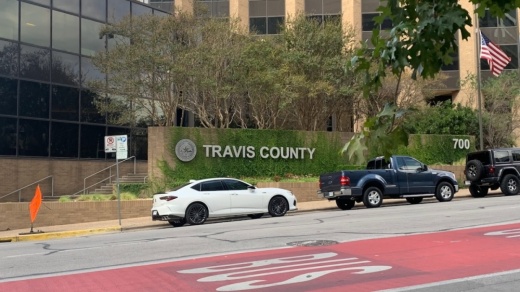Following a high-profile decision to postpone plans to move forward on a new Travis County women's jail, county staff on Oct. 19 laid out a timeline for plans to reassess a master plan to overhaul aging correctional facilities.
When the process was kicked off in June, Travis County commissioners signed a resolution directing staff to re-evaluate the Travis County Adult Correctional System Needs Analysis and Master Plan, which was developed in 2016. They also asked staff to provide recommendations to improve services in the county jail and convene a working group to reduce the number of women in jail. In the meantime, the court voted to pause any decisions related to adding new jail facilities.
The move came as local activists opposed a proposal to move forward with a design contract for the Travis County Trauma Informed Women's Facility, an $80 million project of the master plan that would consolidate women inmates into a single facility. Critics of the proposed women’s jail said the project was based on outdated estimates of the county’s jail population and that the county should focus on continued diversion efforts. Advocates of the facility said incarcerated women needed a safer facility with adequate health care resources.
Moving forward
Staff plan to address the process in three phases, according to Christy Moffett, director of economic development and strategic Investments for the county.
Phase 1 will take place by spring 2022, when staff will identify participants for an independent committee and hire a consultant to lead the process. It will also form an advisory group from the Travis County Sheriff's Office.
During the summer, Phase 2 will begin with the committee discussing each member's perspectives and experiences with the criminal justice system and working to ensure all participants have an equal understanding of the system.
“We need to be able to have an open conversation around criminal justice reform,” Moffett said. “This group would work together to come to consensus around a shared set of values and guiding principles.”
In Phase 3, which is slated to occur across fall and winter of next year, subcommittees would form to discuss possible jail diversion projects and prepare an updated facility plan to present to commissioners.
Travis County Judge Andy Brown, one of the original sponsors of the resolution to update the master plan, urged staff to include diverse voices in the committee, including formerly incarcerated individuals and representatives from the Texas Fair Defense Project, Austin Justice Coalition, Grassroots Leadership and other groups that have criticized the county's existing 20-Year Master Plan.
"Obviously this is not a topic without controversy, and there are folks on all sides and sort of philosophies about this. I think we should try our very best to incorporate everyone's voice in this process," Brown said.
Representatives from several of those local advocacy groups also weighed in, including Amanda Woog, executive director of the Texas Fair Defense Project, noting their concern that the process would prioritize the perspectives from the sheriff's office and people comfortable with the existing master plan.
“I ask that in this process that you really center the people who have been leading this local movement, who are the people who’ve been directly impacted by the system, and you center them as leaders in this process and not as people who are ancillary to the process,” Woog said. “Going with what we’ve seen as the status quo will really threaten the progress that we’ve made.”
Moffett said she will return to commissioners in two to three weeks with a more specific proposal laying out details about the makeup of committees and their level of involvement.
“My biggest interest around the groups that we create ... are that we have a variety of representation of interests and voices at the table, including those that have lived experience in a variety of things,” she said.
Since commissioners hit pause on the master plan this summer, the county has ushered in new initiatives to further reduce the jail population, including a pilot program with the Austin-Travis County Sobering Center to divert people experiencing mental health crises away from jail.
As of May, Travis County correctional facilities held around 1,420 inmates, down nearly 50% from 2,651 in 2016.
However, Travis County Sheriff Sally Hernandez has cited an uptick in inmates since then. As of Oct. 12, the sheriff's office counted 1765 inmates, up 24% since the spring. The number of women in jail has increased by 38%, she said, from 152 to 211.
Hernandez did not elaborate on the reasons for the increase during the court’s Oct. 12 meeting but told commissioners that she will prepare a formal report related to the issue to present at a future meeting.





